Seattle Art Museum
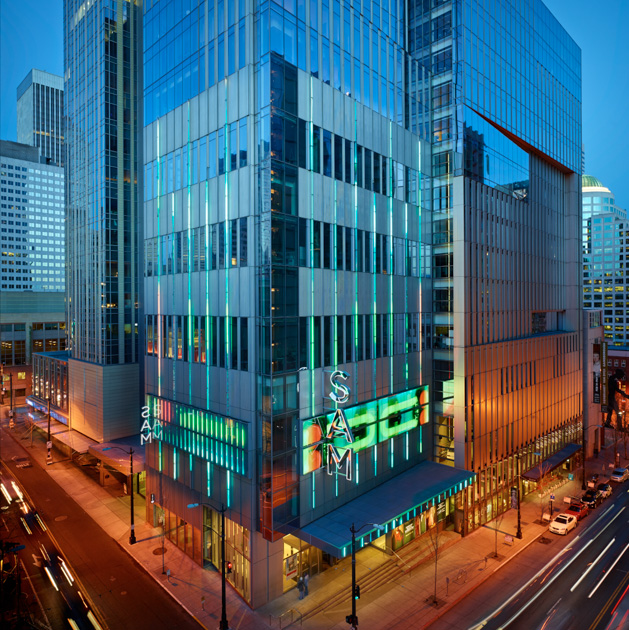
In the heart of downtown Seattle, light-filled galleries invite you to wander through our collections, temporary installations, and special exhibitions from around the world. Our
collections include Asian, African, Ancient American, Ancient Mediterranean, Islamic, European, Oceanic, American, modern and contemporary art, and decorative arts and design. Visitors especially enjoy our remarkable Native American galleries and our exceptional collection of Australian Aboriginal art.
Expansion of SAM
The opening of the new Seattle Art Museum in 2007 unveiled a striking expansion designed by Brad Cloepfil of
Allied Works Architecture, which doubled the museum’s public and exhibition space.
Cloepfil’s design seamlessly connects to SAM’s existing downtown facility, which was designed by
Venturi, Scott Brown & Associates and opened in 1991. The expansion was designed to highlight the art within and create a center of creative expression and energy in downtown Seattle. Its elegant stainless steel façade responds to its urban surroundings, the light and the landscape of the Pacific Northwest, while spacious interiors provide an inviting environment for the experience of art.
In conjunction with the opening of the expansion and SAM’s 75th anniversary in 2008, the museum has also received an unprecedented series of gifts from prominent museum patrons and collectors. The gifts—nearly 1,000 works from more than 40 collections—significantly enhance SAM’s holdings and reinforce the museum’s dedication to artistic excellence. In a remarkable show of support, entire collections by some of the Northwest’s leading collectors have been committed over time, creating the largest gift in the museum’s history.
SAM HISTORICAL TIMELINE
From its early 20th-century roots as the Seattle Fine Arts Society to its growth into a dynamic museum with three distinct venues, explore how the Seattle Art Museum evolved into a vital Seattle institution.
1906
The Seattle Fine Art Society, the parent institution of the Seattle Art Museum (SAM), is founded.
1929
The Fine Art Society is renamed the Art Institute of Seattle under the presidency of Carl F. Gould, an architecture professor at the University of Washington. The Institute continues searching for a permanent facility while staging exhibitions at various venues.
1931
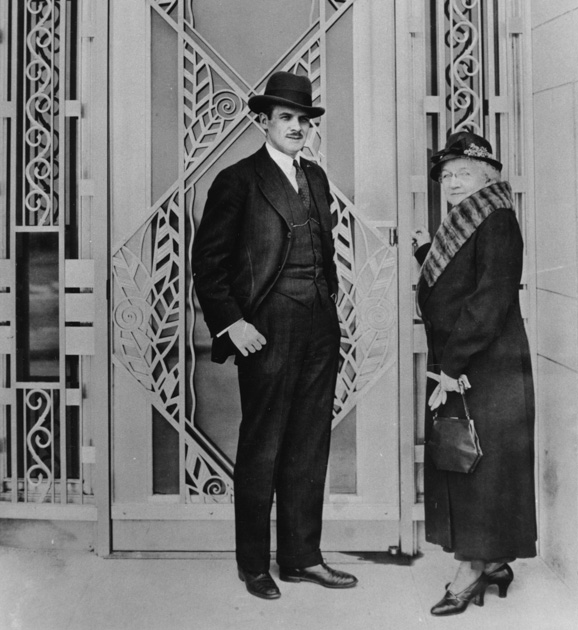
The new president of the Art Institute of Seattle, Dr. Richard E. Fuller, and his mother, Mrs. Margaret E. MacTavish Fuller, offer the City of Seattle $250,000 for a museum building. The city agrees to service and maintain the building if the Fullers and the museum accept responsibility for its construction, operation and collection. The Art Deco structure, designed by Carl F. Gould of Bebb and Gould, is to be located in Capitol Hill’s Volunteer Park. Construction begins.
1933
The Seattle Art Museum (formerly the Art Institute of Seattle) opens its doors to the public on June 29, and attendance during the first day of operations surpasses 33,000. In its first year the museum hosts 346,287 visitors; the city’s entire population is around 365,000. The art on display includes the Fullers’ collection of Asian art, highlighted by Chinese jades and ceramics, complemented by examples of Japanese, Korean, and Indian art, as well as changing exhibitions of living Northwest artists. A gallery is regularly devoted to the display of color facsimiles of European art masterworks, standing in for original art.
1941–1942
With the US entry into World War II, the museum supports the war effort by screening civilian defense films and allowing the use of the museum for the American Red Cross, air raid wardens, and civilian defense instruction. Mrs. Emma Stimson, a close friend of the Fullers, serves as acting director of the museum while Dr. Fuller serves in the US Army.
1944
The museum’s first large-scale traveling exhibition,
India: Its Achievements of the Past and Present, occupies twelve of SAM’s galleries for three months, initiating an ambitious changing exhibitions program.
1948
Asian art scholar Sherman E. Lee arrives to serve as assistant director. He will bring treasured works of Japanese art to SAM and will help acquire the Samuel H. Kress Collection of European paintings for the museum.
1951
Mrs. Donald E. Frederick donates the most significant work of Japanese art in SAM’s collection, the early 17th century
Poem Scroll with Deer, a portion of a scroll that is considered a National Treasure of Japan.
1953
SAM hosts the landmark Official Japanese Exhibition of Painting and Sculpture, receiving more than 73,000 visitors during the one-month run of the show. The exhibition brings SAM an elevated status as a venue for important international exhibitions.
1959
The museum holds two of its most ambitious and important retrospectives to date:
Mark Tobey Retrospective and
Paintings and Drawings by Vincent van Gogh. Van Gogh’s nephew, V.W. van Gogh, attends the latter show, along with a record 126,110 visitors.
1962
The Seattle World’s Fair, held at Seattle Center, brings a heightened artistic awareness to Seattle and a greater appetite for modern art, paving the way for more diverse displays of art at SAM.
1963
SAM hosts an exhibition of Washington State artists in the former United Kingdom Pavilion from the World’s Fair, making use of the venue on a trial basis.
1965
On June 6, the museum officially opens the Seattle Art Museum Pavilion at the Seattle Center as an active venue for modern art and other changing exhibitions. The inaugural exhibition is
The Responsive Eye, an Op Art exhibition assembled by William Seitz of the Museum of Modern Art and sponsored by SAM’s Contemporary Art Council.
1969
The National Council on the Arts (later the NEA), the Seattle Foundation (which Dr. Fuller helped to found), the City of Seattle, and Dr. Fuller finance the acquisition and installation of Isamu Noguchi’s Black Sun in front of the Seattle Art Museum in Volunteer Park. It is the NEA’s first commission in Seattle.
1973
Dr. Fuller retires from the museum after serving forty years as director. He remains involved in both Director Emeritus and President Emeritus roles.
1974
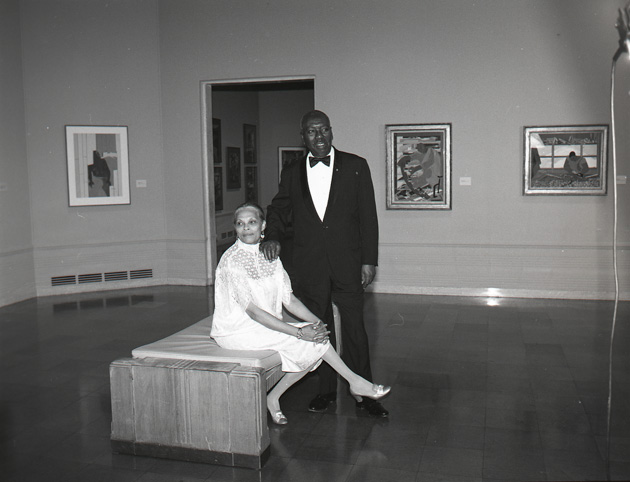
The museum hosts its first retrospective of the work of American master Jacob Lawrence. Lawrence and his wife, Gwendolyn Knight Lawrence, moved to Seattle in 1970; they will live and work here for the next thirty years.
Willis F. Woods is named director of SAM.
1976
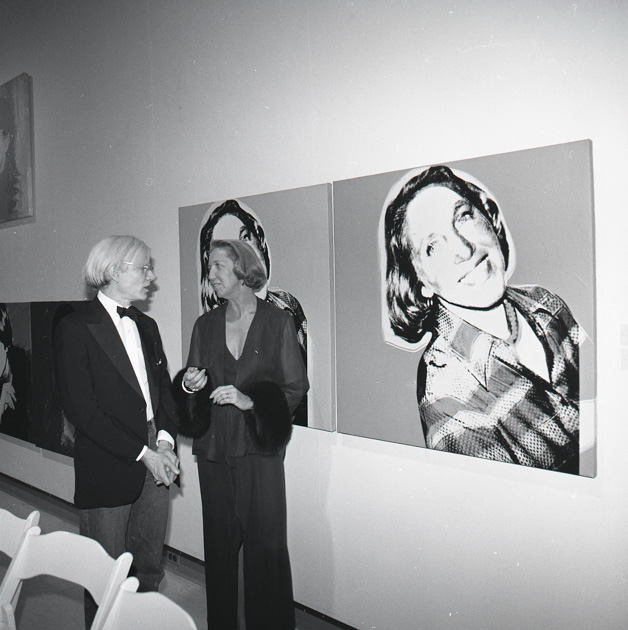
Exhibition activity at the Seattle Art Museum Pavilion ramps up after the founding of the modern art curatorial department in 1975. In 1976, Museum Week celebrations include a visit from Andy Warhol concurrent with an exhibition of Warhol portraits.
Founder, benefactor, and long-time museum director Dr. Richard E. Fuller passes away on December 10.
1978
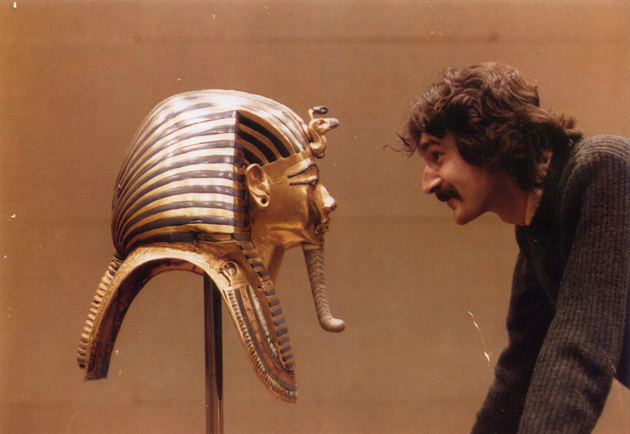
Treasures of Tutankhamun, shown at the Flag Pavilion at Seattle Center, forever alters the museum’s profile, bringing increases to staff and new emphases on exhibitions and publications. The six-month show attracts nearly 1.3 million visitors. The exhibition’s popularity and financial success fuel the plans and preparations for a permanent downtown facility.
Willis Woods steps down as director.
1979
Arnold H. Jolles takes over as SAM director.
1981
The SAM collections expand with an unexpected gift of African art from collector Katherine C. White and through the support of the Boeing Company, an extraordinary combination of private philanthropy and corporate support.
1986
Arnold Jolles steps down as director.
1987
Jay Gates joins SAM as its new director.
1990
Jonathan Borofsky’s 48-foot-tall
Hammering Man is commissioned by the City of Seattle with the support of the Seattle Art Commission’s 1% for Art program, the Virginia Wright Fund, and the Seattle-based group PONCHO—Patrons of Northwest Civic, Cultural, and Charitable Organizations. Though officially part of the City of Seattle’s art collection, Borofsky’s large-scale sculpture is positioned at the entryway to the new Seattle Art Museum and quickly becomes a symbol of the museum.
1991
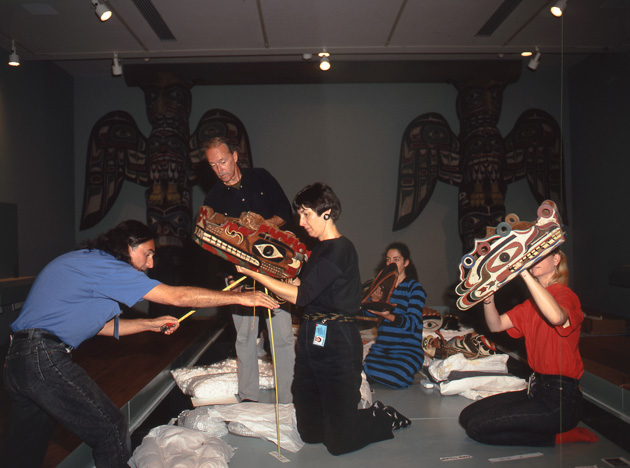
The new building downtown, designed by Robert Venturi, opens its doors on December 5 and hosts over 10,000 visitors on the first day. John H. Hauberg donates his celebrated collection of Northwest Native art, forming the foundation of the museum’s holdings in Native American art. The Volunteer Park building closes for renovations.
1993
Jay Gates steps down as director.
1994
The rededicated
Seattle Asian Art Museum opens on August 13 with a day of festivities that includes tours, folk art workshops, and performances by local dance and music groups, bringing more than 6,000 visitors to the museum. The new space allotted for Asian art allows for many more of the approximately 6,000 Asian art objects to go on display. Mimi Gardner Gates joins SAM as its new director.
1997
SAM unveils the special exhibition
Leonardo Lives: The Codex Leicester and Leonardo da Vinci’s Legacy of Art and Science, featuring a rare manuscript of Leonardo da Vinci’s scientific observations and sketches, lent to the museum by Bill and Melinda Gates. The exhibition draws a quarter of a million visitors.
1999
SAM, in partnership with the Trust for Public Land, raises $17 million for the purchase of future sculpture park property on Seattle’s waterfront. Jon and Mary Shirley endow the park with a $20 million gift that will allow the park to be free to the public; they name the park the
Olympic Sculpture Park. This is also the beginning of a capital campaign that will eventually raise $220 million with more than 10,000 gifts—the largest cultural fundraising campaign in the history of the city of Seattle.
2000
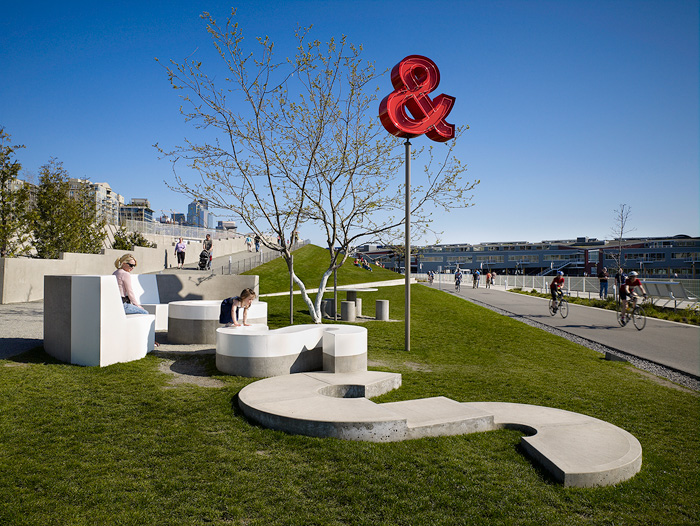
Marion Weiss and Michael Manfredi of Weiss/Manfredi Architects are selected as lead designers for the Olympic Sculpture Park. Also, Jon and Mary Shirley donate Alexander Calder’s
The Eagle (1971), a landmark art acquisition for the future Olympic Sculpture Park. Until the sculpture park is finished, The Eagle rests in front of the Seattle Asian Art Museum.
2007
The Olympic Sculpture Park opens in January as downtown Seattle’s largest green space, highlighted by stunning works of modern and contemporary art.
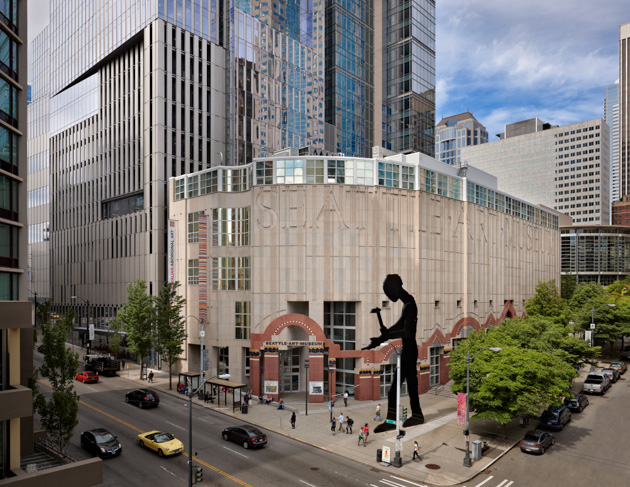
The Seattle Art Museum downtown reopens in May, welcoming more than 32,000 people during a 35-hour marathon opening weekend. The expansion, designed by Portland-based Allied Works Architecture, nearly doubles the available exhibition space.
2008
SAM celebrates its 75th anniversary with an ambitious art acquisition initiative. The results: over 1,000 gifts (full, partial, or pledged) from more than seventy donors bring the collection to nearly 24,000 objects.
2009
After having overseen the inaugural year of the Seattle Asian Art Museum, the opening of the Olympic Sculpture Park, and the downtown museum expansion, accomplished director Mimi Gardner Gates retires.
Derrick Cartwright takes over as SAM director.
2010
Picasso: Masterpieces from the Musée National Picasso, Paris breaks SAM’s record for the most popular exhibition in the history of the downtown Seattle Art Museum, attracting more than 400,000 visitors and boosting membership to a new high of 48,000 during its showing in Seattle.
2011
Derrick Cartwright steps down as director.
2012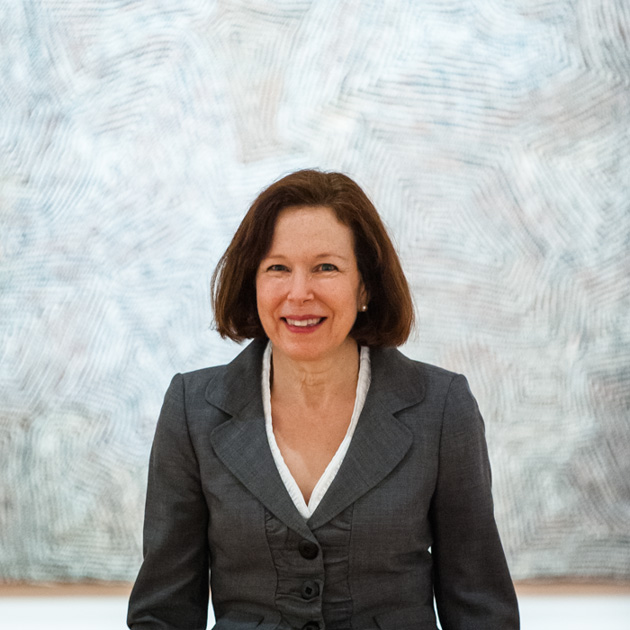
After an extensive international search, Kimerly Rorschach is chosen as the Seattle Art Museum's new Illsley Ball Nordstrom Director and CEO. Prior to joining SAM, Ms. Rorschach served as the Mary Duke Biddle Trent and James H. Semans Director of the Nasher Museum of Art at Duke University.
2013

SAM unveils Doug Aitken’s
MIRROR, an
interactive art installation on the façade of the downtown building.
2014
SAM acquires 85 works from the Virginia and Bagley Wright Collection that together raise the profile of the museum’s modern and contemporary art collection to an unprecedented level.
Echo, a dramatic 46-foot-tall sculpture by Spanish artist Jaume Plensa that is donated by Barney A. Ebsworth, transforms the shoreline of the Olympic Sculpture Park.
2017
SAM celebrates the 10th anniversary of the Olympic Sculpture Park and the downtown expansion. The Seattle Asian Art Museum closes for necessary building renovations, with plans to reopen in 2019.
2018
SAM breaks ground on the renovation and expansion of the Seattle Asian Art Museum’s historic building.
2019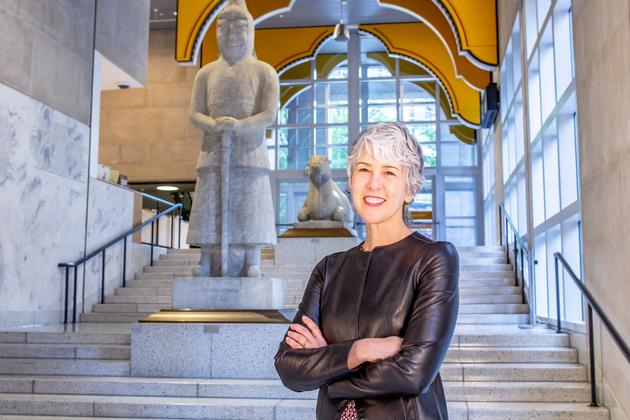
Kimerly Rorschach retires as director and CEO. Amada Cruz becomes the museum’s new Illsley Ball Nordstrom Director and CEO. Prior to joining SAM, Ms. Cruz served as the Sybil Harrington Director and CEO of the Phoenix Art Museum in Arizona, the largest art museum in the Southwestern United States.
2020
The newly renovated and expanded Seattle Asian Art Museum opens to the public on February 8.